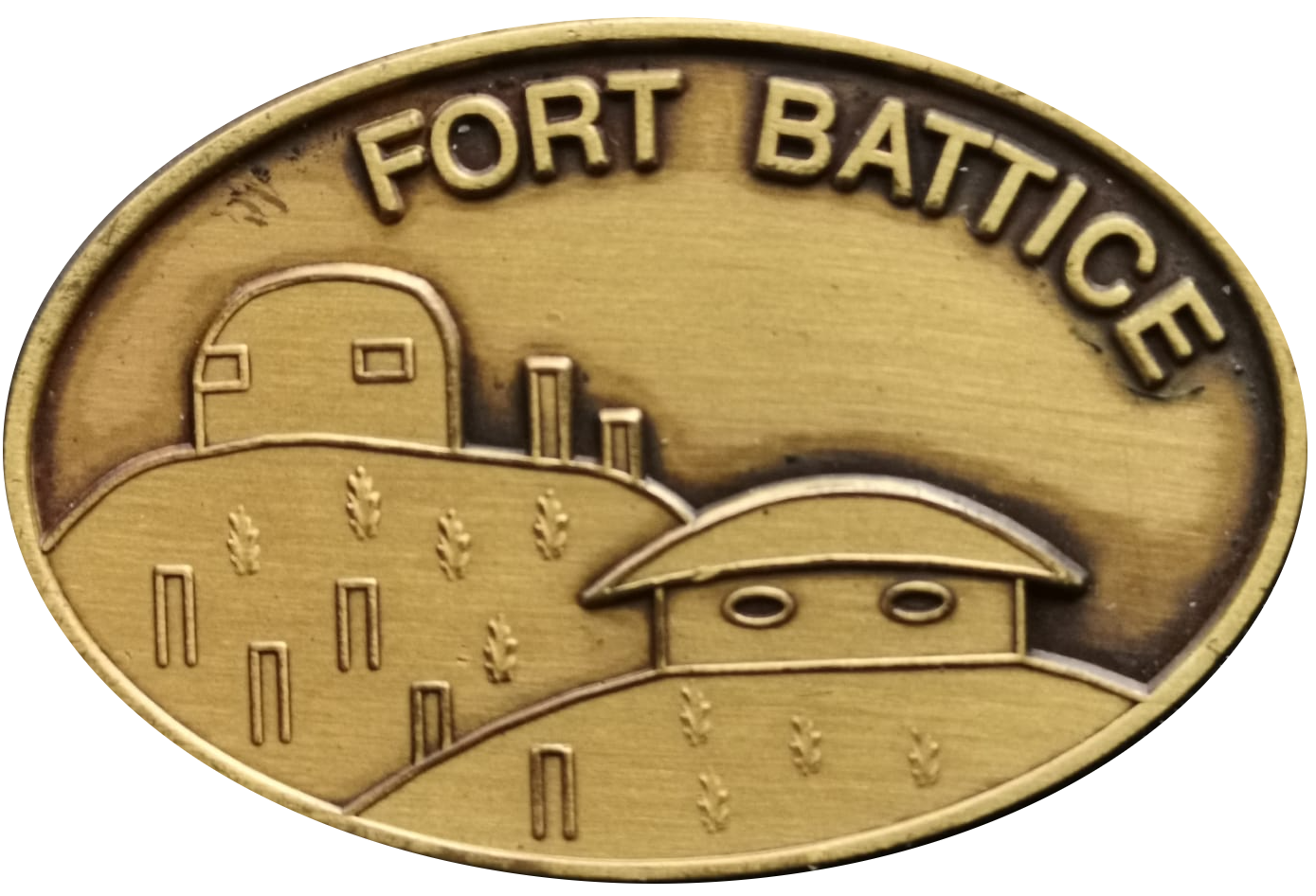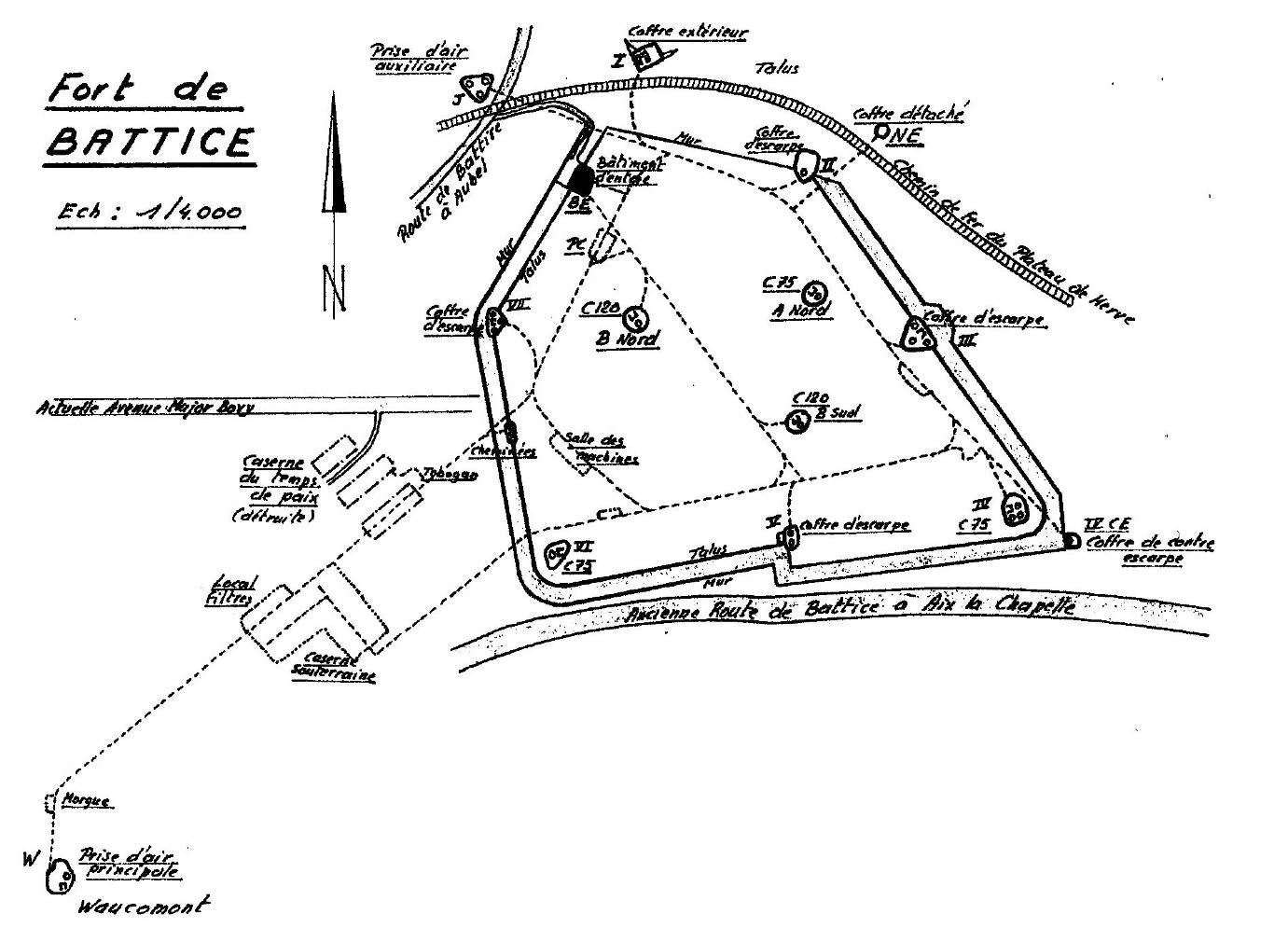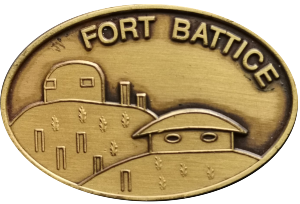




Fort Battice is a large artillery stronghold with a total surface of 47 hectares (116 acres).
The fortress was comprised of 15 bunkers, 5 of which were artillery cupolas and turrets (unfortunately only 1 of these is still intact). The central essential part is pentagon shaped and measures 15 hectares (37 acres). It is here that the artillery pieces were to be found.
This pentagon is surrounded by an anti-tank ditch on four of the five sides.
A high wall interrupts the ditch next to Block 2, while it remains open in front of Block Entrée: here, anti-tank barriers and barbed wire were strategically deployed.
On the perimeter of the pentagon, facing the ditch, defensive bunkers were strategically positioned to cover the ditch with heavy machine guns.
Along the railway line was no ditch, but two particular bunkers were equipped with anti-tank guns to cover for this.
The fort had two main entries: Block BE was the access during peace time, while Block Waucomont was the entry point in war time.
In the underground part of the fort, following installations could be found: barracks with sleeping quarters, mess facilities, shower room and infirmary;
a powerplant with machine room, workshops and fuel reserves; ammunition stores, ammunition elevators and everything necessary to endure a one month combat situation.
A maze of underground galleries and tunnels connects all these different facilities over a length of 3.5 kilometers (2.2 miles) at 30 meters below ground level.
The garrison of the fort comprised 750 men.
Fort Battice was the closest to the enemy border of all fortresses of PFL1 (1st fortified position of Liège) and key to its defence. Hence the heavier armoury and bigger ammunition reserve.
Innside the underground barracks a number of splendid wall paintings can be found. It is the only Belgian fortress with this many paintings .
These frescos were the work of the soldiers during the so called Phony War (period of incertainty before all hell broke loose).
During peace time the garrison was stationed mainly above ground in wooden barracks.
Armament of Fort Battice:





Fort Battice is a large artillery stronghold with a total surface of 47 hectares (116 acres).
The fortress was comprised of 15 bunkers, 5 of which were artillery cupolas and turrets (unfortunately only 1 of these is still intact). The central essential part is pentagon shaped and measures 15 hectares (37 acres). It is here that the artillery pieces were to be found.
This pentagon is surrounded by an anti-tank ditch on four of the five sides.
A high wall interrupts the ditch next to Block 2, while it remains open in front of Block Entrée: here, anti-tank barriers and barbed wire were strategically deployed.
On the perimeter of the pentagon, facing the ditch, defensive bunkers were strategically positioned to cover the ditch with heavy machine guns.
Along the railway line was no ditch, but two particular bunkers were equipped with anti-tank guns to cover for this.
The fort had two main entries: Block BE was the access during peace time, while Block Waucomont was the entry point in war time.
In the underground part of the fort, following installations could be found: barracks with sleeping quarters, mess facilities, shower room and infirmary;
a powerplant with machine room, workshops and fuel reserves; ammunition stores, ammunition elevators and everything necessary to endure a one month combat situation.
A maze of underground galleries and tunnels connects all these different facilities over a length of 3.5 kilometers (2.2 miles) at 30 meters below ground level.
The garrison of the fort comprised 750 men.
Fort Battice was the closest to the enemy border of all fortresses of PFL1 (1st fortified position of Liège) and key to its defence. Hence the heavier armoury and bigger ammunition reserve.
Innside the underground barracks a number of splendid wall paintings can be found. It is the only Belgian fortress with this many paintings .
These frescos were the work of the soldiers during the so called Phony War (period of incertainty before all hell broke loose).
During peace time the garrison was stationed mainly above ground in wooden barracks.
Armament of Fort Battice:
These bunkers were equipped with armoured observation turrets and search lights.

